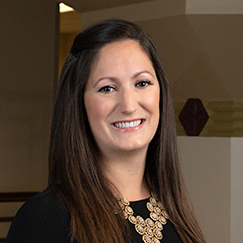Maximizing Efficiency in Your Nonprofit Board Meetings
 Posted by Jenna Sheehan on September 18, 2024
Posted by Jenna Sheehan on September 18, 2024
Effective nonprofit board meetings should be both focused and efficient. According to BoardSource, nonprofit boards that meet monthly should typically be able to conduct business within one to two hours. If your meetings consistently exceed this timeframe, it may signal a lack of preparation and focus, which could ultimately undermine your organization’s success. Busy board members may lose confidence in the leadership — or even resign. Here’s how you can streamline your board meetings for maximum productivity.
Setting a Structured Agenda
Once a meeting date is set, begin by preparing a clear, structured agenda. Reach out to board members via email to gather any additional topics they feel should be addressed. This step helps ensure that all significant concerns are included and reduces the risk of unexpected topics prolonging the meeting.
For each agenda item, designate a specific time allotment and assign responsibility to individual board members. It’s essential to incorporate at least one vote to maintain a sense of progress and purpose. However, avoid overloading the agenda, as this can lead to rushed discussions or an overextended meeting.
Before the meeting, distribute a comprehensive board packet at least two days in advance. This packet should include the agenda, minutes from the previous meeting, and any relevant materials for new agenda items, such as financial reports or project proposals.
Keeping the Meeting on Track
To encourage collegiality, consider hosting a brief reception before each board meeting. While some members may have limited time, many will appreciate the opportunity to strengthen relationships with their peers.
Once the meeting begins, the executive director and board chair should maintain focus by:
- Adhering closely to the agenda,
- Enforcing time limits on discussions, especially when one or two members dominate, and
- Prompting a vote after a reasonable discussion period.
If members need additional time to consider an issue, it’s better to defer the decision to a future meeting than to let discussions drag on. Always conclude on a positive note by summarizing key accomplishments and thanking attendees for their participation.
Following Up After the Meeting
Post-meeting follow-up is crucial for ensuring effectiveness. Address any unresolved questions or issues raised during the meeting, and be sure to place these items on the agenda for the next session if necessary.
Additionally, monitor board members’ commitment to their roles. If a member frequently misses meetings or arrives unprepared, it may be necessary to intervene. Persistent issues may warrant reconsideration of the member’s involvement with the board.
Implementing a Consent Agenda
A consent agenda can be a valuable tool for improving meeting efficiency. This method allows the board to consolidate routine items — such as approving prior meeting minutes or committee reports — into a single vote, bypassing unnecessary discussion. This simple step can significantly reduce meeting time.
For further guidance on optimizing nonprofit governance practices, feel free to reach out to us.


